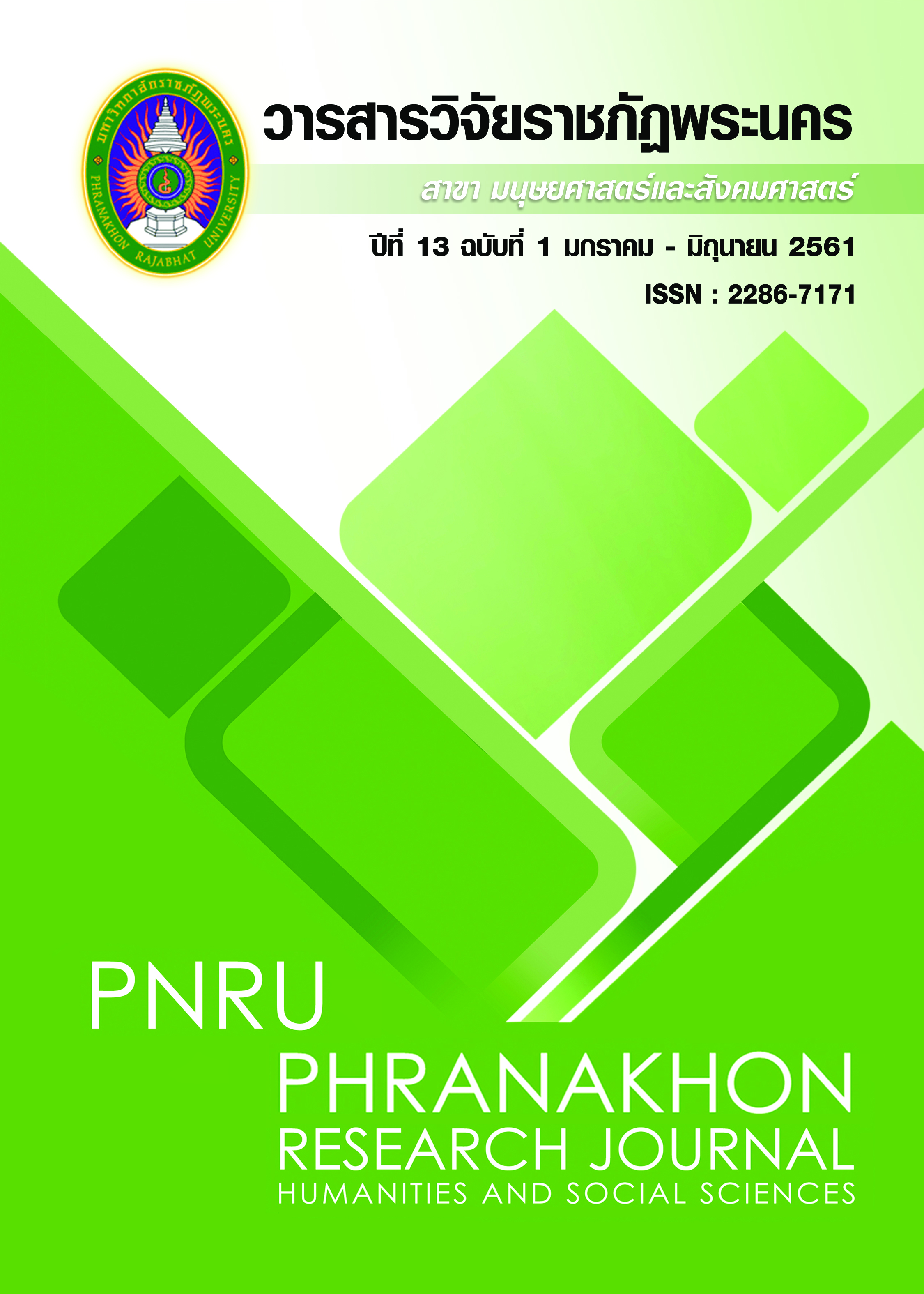ความเป็นชายที่มีอำนาจนำในโฆษณารถยนต์กระบะของไทยที่ออกอากาศทางโทรทัศน์
Main Article Content
Abstract
Four television commercials for pickup trucks in Thailand were textually analyzed for hegemonic masculinity, a current configuration of practice legitimizing male dominant position in society and justifying the subordination of women. After narrative and semiology were examined, these commercials were found to contain culturally normative ideals producing examplars of masculinity. Protagonists were heroic symbols of hegemonic masculinity as masters of dominance, control, and daring. With technology seen as a masculine culture, pickup trucks as marketed have embedded meanings of body and mind. Well-built, strong bodies relate to masculine ideals, whereas mind relates to feminine subordination and compliance.
Article Details
Each publish articles were copyright by Phranakorn Rajabhat University
Any contents which appeared in each articles in the journal were authors personal opinion. It did not relate to Phranakorn Rajabhat University and other instructors in the university. Each authors would take responsibility on their articles. If there are any mistake, the authors will take responsibility themselves
References
Craig, S (ed.) Men, Masculinity, And The Media (137 – 153). CA: SAGE.
Brandth, B. (1995). Rural masculinity in transition gender images in tractor advertisement. Journal of Rural
Studies, 11(2), 123 – 133.
Clarsen, G. (2000). The ‘dainty female toe’ and the ‘brawny male arm’ : conceptions of bodies and power in automobile
technology. Australian Feminist Studies, 15(32), 153 – 163. DOI: 10. 1080/08164640050138671.
Connell, R. W. (1987). Gender and power. UK: Page Bros.
Connell, R. W. (2005a). Masculinities. Cambridge: Polity Press.
Connell, R. W. (2005b, December). Hegemonic masculinity: rethinking the concept. Gender & Society, 19(6), 829 – 859.
Donaldson, M. (1993, October). What is hegemonic masculinity. Theory and Society, 22(50). 643 – 657.
Duangwises, Narupon. (2016). Studying Men and Masculinities. Retrieved May 1,2017, from http://queerthailand.
blogspot.com/2013/03/studying-menandmasculinities.html. (in Thai)
Duangwises, Narupon. (2017). Reconstructing the myth of masculinity in Thai society: How to study a masculinity?. Retrieved May 1, 2017, from http://www.sac.or.th/conference/2017/blog-post. (in Thai)
Eureka, Aoo. (2016). AOO’s directing reel :Tata Xenon double cab [Video file]. Retrieved April 2, 2016, from https://youtu.be/4zA-SwFik8s
Hanke, R. (1992). Hegemonic masculinity in transition. In Craig, S (ed.) Men, Masculinity, And The Media (185 –
198). CA: SAGE.
Heffner, R. R., Turrentine, T. S., Kurani, K. S., & University of California, Davis. (2006). A primer on automobile
semiotics. Davis, Calif: Institute of Transportation Studies, University of California, Davis.
Johnson, F. L. (2008). Imaging In Advertising: Verbal and Visual Codes of Commerce. NY: Routledge.
Kaewthep, K. (2010). New Analytical Methods in Media Studies. Bangkok: Parbpim. (in Thai)
Larsen, P. (1991). A handbook of qualitative methodologies for mass communication research. London: Routledge.
Lezotte, C. (2012). The evolution of the “chick car” or: what came first, the chick or the car?. The Journal of Popular
Culture, 45(3). 516 – 531.
Neale, L., Robbie, R., & Martin, B. (2016). Gender identity and brand incongruence:when in doubt, pursue masculinity.
Journal of Strategic Marketing, 24(5), 347–359.DOI: 10.1080/0965254X.2015. 1011203.
Perucha, B. N. (2009). On the use of narrative discourse in advertising: hybridity, textual voices and gender identities.
Resla, 22, 291 – 306.
Ricciardelli, R., Clow, K. A., & White P. (2010). Investigating hegemonic masculinity: portrayals of masculinity in mes’s
lifestyle magazines. Sex Roles, 63, 65 – 78. DOI: 10.1007/s11199-010-9764-8.
Ririn, B., & Amalia, L. L. (2012). Two faces of masculinity in Axe Chocolate Advertisement. IndonesianJournal of
Applied Linguistics, 1(2), 139 – 153.
Rose, G. (2012). Visual Methodologies: An Introduction to Researching with Visual Materials. London: SAGE.
Strate, L. (1992). Beer commercials: a manual masculinity. In Craig, S (ed.) Men, Masculinity, And The Media (78 – 92). CA: SAGE.
Trujillo, N. (1991). Hegemonic masculinity on the mound: media representations of Nolan Ryan and American sports
culture. Critical Studies in Mass Communication, 8, 290 – 308.
Wajcman, J. (1996). Feminism Confronts Technology. Great Britain: Pennsylvania State University.
Whelehan, I. (1996). Modern feminist Thought: from the second wave to
“postfeminism”. NY: New York University Press. Television commercials
Mitsubishi Motors Thailand. (2016). New Triton:destination [Video file]. Retrieved January 21, 2016, from https://youtu. be/qiBTUbQ7tAQ
Nissan Thailand. (2016). Nissan Navara:Koohoo taokae krang-gern-pigad [Video file]. Retrieved June 6, 2016, from https://youtu.be/xPymU-3kX7s
Toyota Motor Thailand. (2016). Hilux Revo:Krang-jing nueb-jing [Video file]. Retrieved August 4, 2016, from https://
youtu.be/sF6BcgRRkqw


